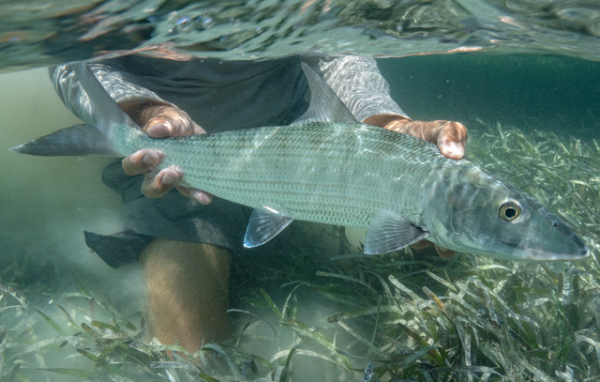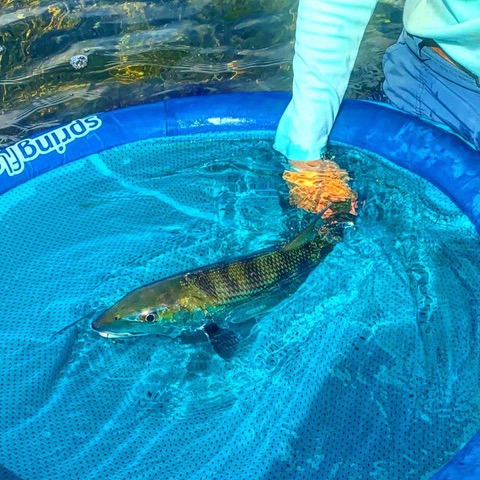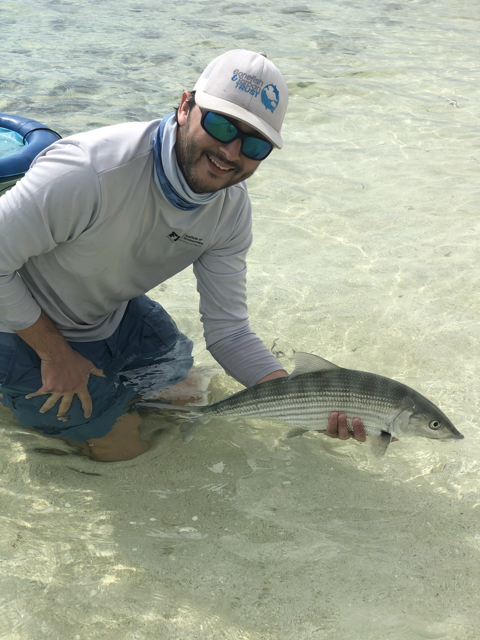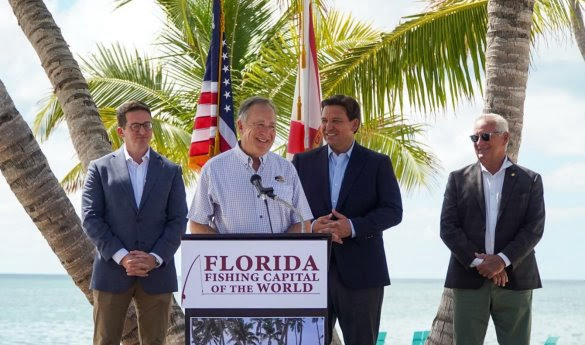South Florida Bonefish on Drugs

File this one under the more we know, the less we wish we knew.
A three-year study by Florida International University (FIU) and Bonefish & Tarpon Trust (BTT) has discovered pharmaceutical contaminants in the blood and other tissues of bonefish in Biscayne Bay and the Florida Keys.
Since the study began in 2018, FIU scientists and BTT research associates, in partnership with Sweden’s Umeå University and the University of Agricultural Sciences (SLU), have sampled 93 fish in South Florida, finding an average of seven pharmaceuticals per bonefish.
One bonefish had an incredible 17 pharmaceuticals in its system!
The list includes blood pressure medications, antidepressants, prostate treatment medications, antibiotics and pain relievers. Researchers also found pharmaceuticals in bonefish prey—crabs, shrimp and fish—suggesting that many of Florida’s valuable fisheries are exposed, not only the bonefish fishery.
While the amount of the drugs is minimal in most cases, and the level needed to cause harm to the fish is not known at this point, the fact that they are there, and widespread, and that multiple prescription drugs are involved indicates that southeast Florida and the Keys have sewage treatment and waste disposal issues.
According to the USGS, drugs get into U.S. sewage systems both because prescriptions consumed are not fully utilized in the human system and so go into the waste system, and also because most of us flush unused pills down the drain. While treatment gets rid of many of the harmful components of sewage, it evidently does not get rid of the remnant drugs.
Most South Florida wastewater treatment plants began flushing treated sewage (and sometimes not-so-treated sewage) through pipes exiting into the ocean about 1 to 3 miles offshore beginning in the 1970s, but the Ocean Outfall Act combined with massive funding has converted most—but not all–of this flushing to deep well injection in recent years.
The remnant drugs apparently remain in the habitat, however, perhaps in the mud and marl and sea grasses, from which they find their way into the pink shrimp, mud crabs and small fish that are eaten by the larger fish, including the bonefish tested in the study. You are what you eat—a diet rich in pharmaceuticals results in drug-laden fish. Whether this is going to harm the bonefish is unknown at this point, but higher concentrations of some drugs in inland lakes have proven to cause reproductive issues in largemouth and smallmouth bass.

A Widespread Problem?
What’s more, if the drugs are in the water around the keys, where daily tidal flushing and current flow between the Gulf of Mexico and the Florida Straits brings steady renewal of the water, it’s very likely that similar drugs are in more enclosed waters around the state, including Tampa Bay, Charlotte Harbor and the Indian River Lagoon.
On Tampa Bay, the city of Tampa currently dumps 50 million gallons a day of highly treated wastewater daily into Hillsborough Bay, the area of the estuary that has the highest amount of nutrient in the water and consequently the lowest amount of seagrass.
The current mayor of Tampa is searching for ways to re-use the water but the populace is opposed. One involves pumping the reclaimed water — which is highly treated, but not drinkable sewage — into the aquifer then pumping it into a reservoir on the Hillsborough River at potable water standards. Another option would be to sell some of the water, inject some of it deep into the aquifer and put the rest into the river. The city outfall currently puts about 650 tons of nitrogen per year into the bay.
And while there are few bonefish in any locations north of the Keys, there are lots of redfish, snook and trout—all species that people eat, unlike bonefish which are a catch-and-release species.

What Can Be Done?
There are two basic approaches to improving the quality of coastal waters, according to researchers. One is to focus on reducing the flow of excess nutrients into the waterways. This includes better water treatment for the water that still goes into the ocean, likely including ozonation, a process that has been used in Europe to reduce pharmaceuticals in outfalls, according to FIU. Deep well injection is another approach that shows promise, with the treated water being sent down thousands of feet below an impermeable rock layer rather than pumped into the ocean—much of the Florida Keys is already using this approach.
A simple improvement all of us could make is never to flush unused prescriptions down the drain.
Programs to expand salt marshes, mangroves and sea grasses also have been shown to help on harmful nutrient uptake, and increasing the numbers of oysters and clams in the water can assist in filtering and keeping water clear enough for sea grass to grow. Several bills in Florida’s legislature currently would help to fund more projects to improve the habitat in this way. (A side benefit, of course, is that these programs are also highly likely to improve sportfishing for all of us.)
In short, there are steps that can be taken to hopefully reverse the potential harm our medications may create in our sportfish and seafood, but it will take time, money, and political willpower to get it done.
— Frank Sargeant






